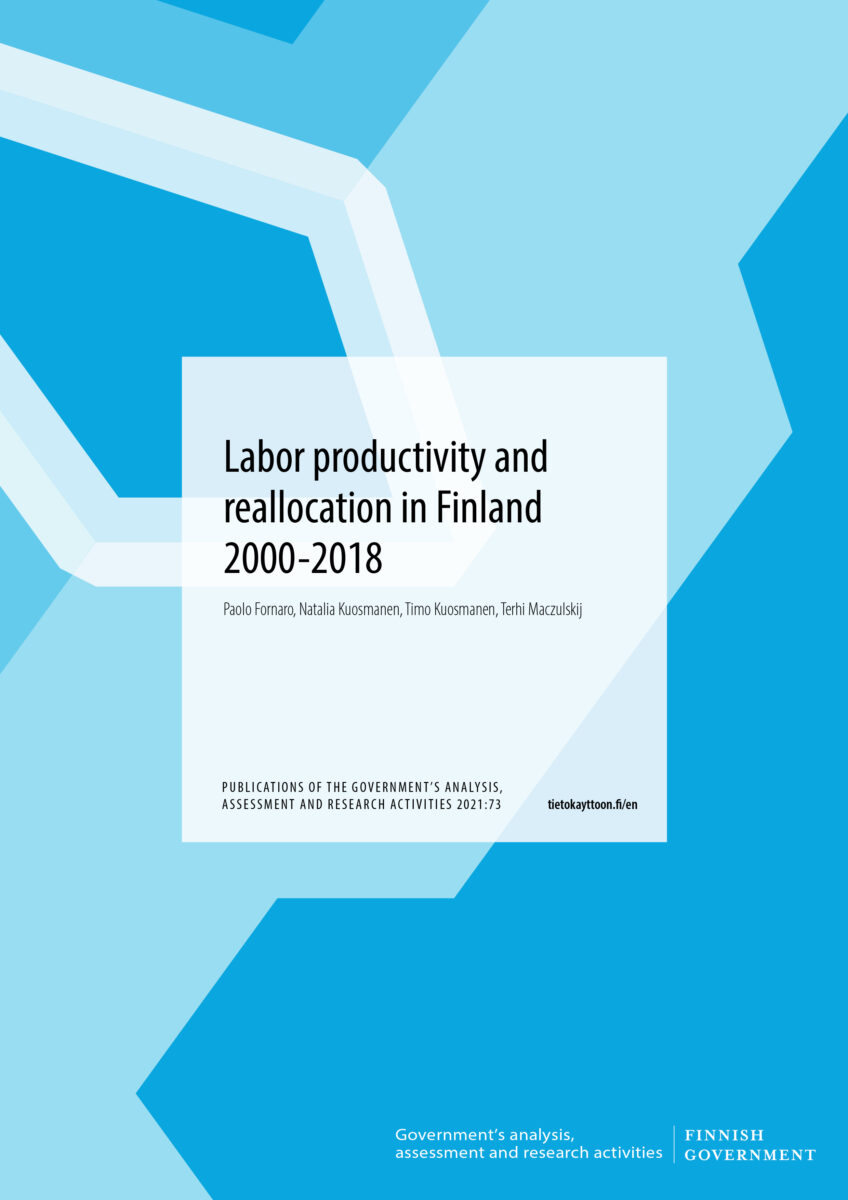
Labor productivity of the Finnish economy has stuck close to the level of year 2007 for over a decade. Positive productivity development still occurs in many establishments and firms in various industries. This report examines the impacts of resource allocation and structural changes on the labor productivity growth in Finland’s manufacturing and service sectors, information and communication technology industry, and the entire business sector during the period 2000–2018. The purpose of this study is to present an empirical comparison of structural change productivity decompositions known in the literature, and based on the results, draw conclusions regarding the productivity impacts of resource allocation and structural changes.
We find that different decomposition methods yield to some extent different empirical results. All methods considered suggest that positive productivity growth mainly occurs in the continuing firms. Most decompositions suggest that the impact of structural change has been generally negative. The role of resource allocation between firms is particularly notable during the recession, however, the allocation has improved to some extent during the last years of the study period. Inefficient allocation of resources between industries contributes to the productivity slowdown of Finland’s business sector.
Publications of the Government’s analysis, assessment and research activities 2021:73.
Arkadiagatan 23 B
00100 HELSINGFORS
+358 (09) 609900